The Honest Guide to Growing an Indoor Banana Plant (Without Losing Your Mind)
Over the years, I’ve filled my home and workshop with all kinds of plants, but let’s be real—nothing stops people in their tracks like a banana plant. Those giant, paddle-shaped leaves instantly make a room feel like a tropical escape. It’s a vibe that’s tough to top.
In this article
- First, Let’s Get One Thing Straight
- Your Startup Shopping List (And What It’ll Cost)
- The Foundation: The Right Pot and Soil
- Your First 24 Hours: A Quick Guide
- Core Care: Light, Water, and Humidity
- Feeding: The Diet of a Rapid Grower
- Maintenance and Making More Plants
- Troubleshooting the Inevitable
- A Final Thought
- Galerie d’inspiration
My first one, a Dwarf Cavendish I picked up from a specialty nursery, was a huge learning experience. I’d seen them looking sad and neglected in big-box stores and thought I could do better. That first plant taught me a lot, mostly by showing me everything I was doing wrong. These guys aren’t like a snake plant you can just stick in a corner and forget about. They’re demanding. They need your attention. But honestly, the thrill of watching a new leaf slowly unfurl makes all the effort worth it.
So, this isn’t just another post with a few quick tips. I’m going to walk you through the methods I’ve dialed in over time. We’ll get into the stuff that actually makes a difference: the soil mix that works, the light they crave, and how to deal with the problems that will almost certainly pop up. Growing an indoor banana plant is a project, for sure, but with the right game plan, it’s one of the most rewarding ones you can take on.
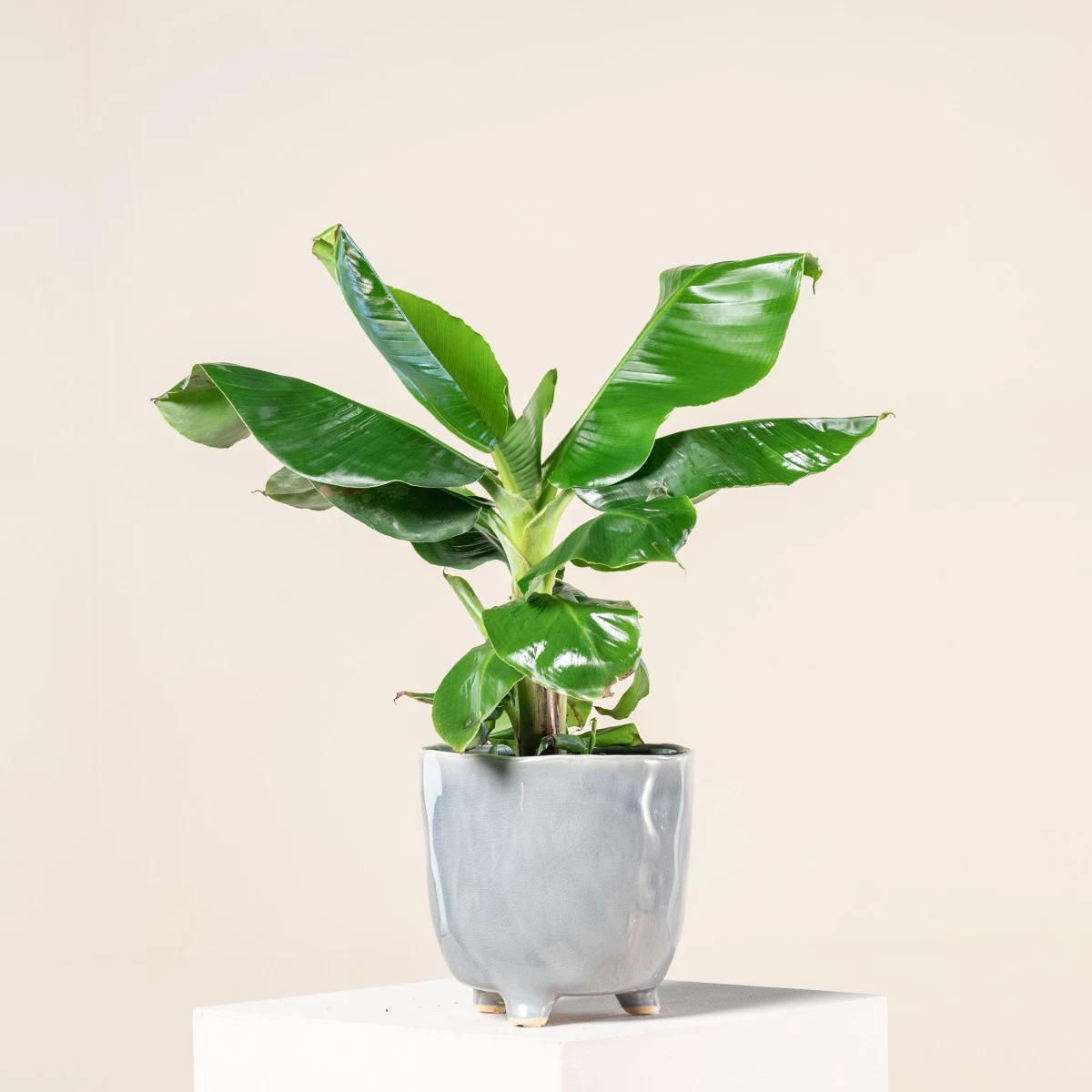
First, Let’s Get One Thing Straight
Before we dive into care, you’ve got to understand what this plant actually is. And surprise—it’s not a tree. It doesn’t have a woody trunk at all. It’s technically a giant herbaceous perennial, growing from an underground corm (which is like a bulb). That thick column you’re thinking of as a trunk? That’s a ‘pseudostem,’ and it’s just a bunch of tightly wrapped leaf sheaths. A new leaf literally pushes its way up through the very center of this false stem and unrolls at the top. Knowing this is key because it tells you the plant’s life force comes from its base, from the corm in the soil, not from the ‘trunk’ like a real tree.
Choosing a Plant That Won’t Take Over Your House
You can’t just grab any banana plant and hope for the best. The ones growing in fields can soar over 20 feet tall, which probably won’t work in your living room. For growing indoors, you have to stick with a dwarf variety. The pros have bred some fantastic options that are perfectly happy in pots.
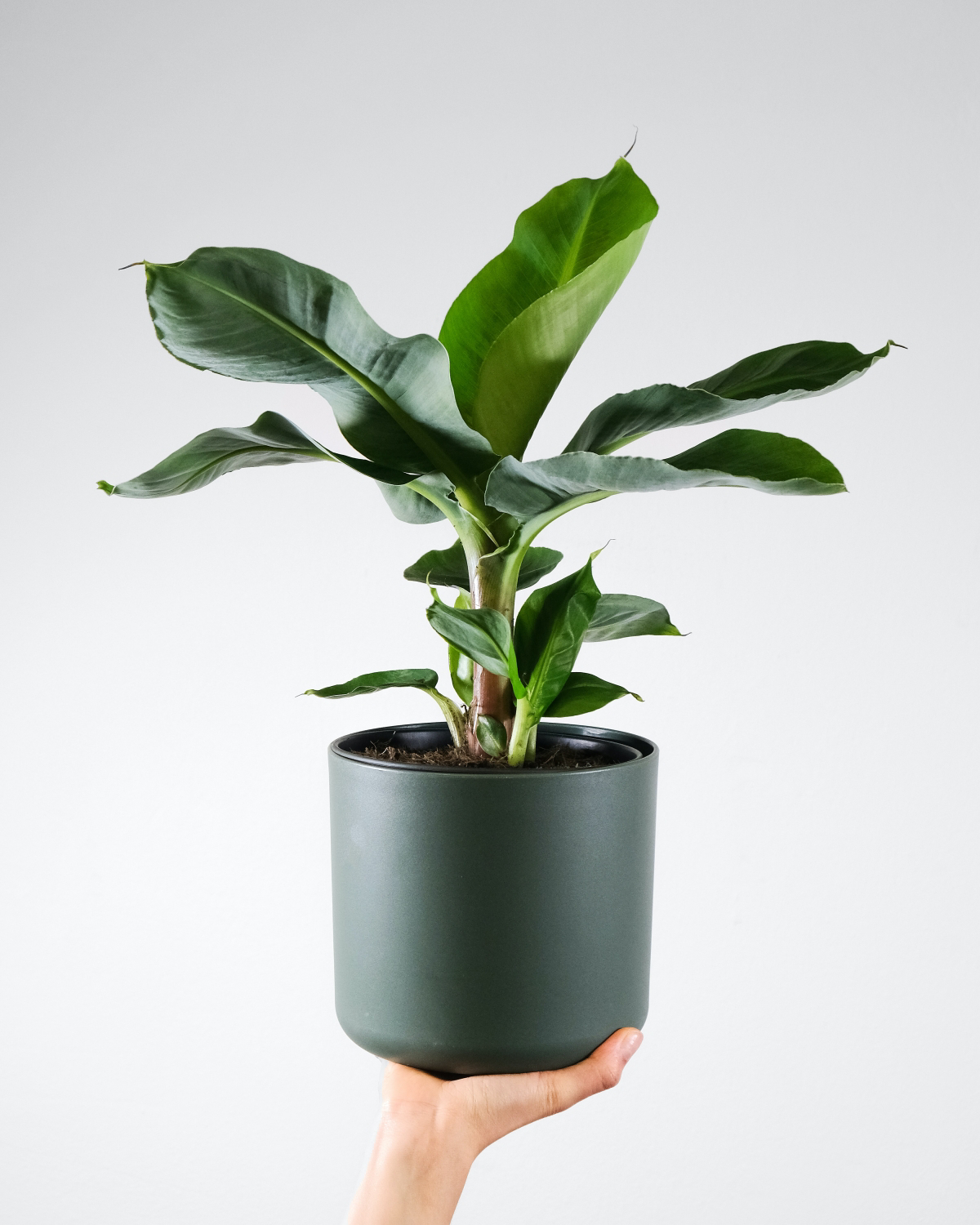
Here are the ones I’ve had the best luck with:
- Dwarf Cavendish: This is the most common one you’ll find for sale, and it’s a solid choice. It’s a reliable grower but still needs some room, as it can push 6 to 8 feet tall in a big pot if you have high ceilings. Best for a floor spot with plenty of vertical space.
- Super Dwarf Cavendish: A much more manageable version, this one usually stays between 3 and 5 feet tall. This is my go-to recommendation for most standard homes. It gives you that classic banana look without you having to remodel.
- Musa ‘Truly Tiny’: Just like the name says, this little guy is one of the smallest around, often maxing out at about 2 to 3 feet. It’s perfect for a tabletop or a bright corner where every inch counts.
A quick tip: Try to buy your plant from a reputable local nursery instead of a big chain store if you can. The plants are usually healthier, and they can tell you exactly which variety you’re getting. I’ve seen so many plants at big stores labeled with a generic ‘Indoor Banana’ tag, which is totally unhelpful when you’re trying to figure out if it will outgrow your apartment in six months.
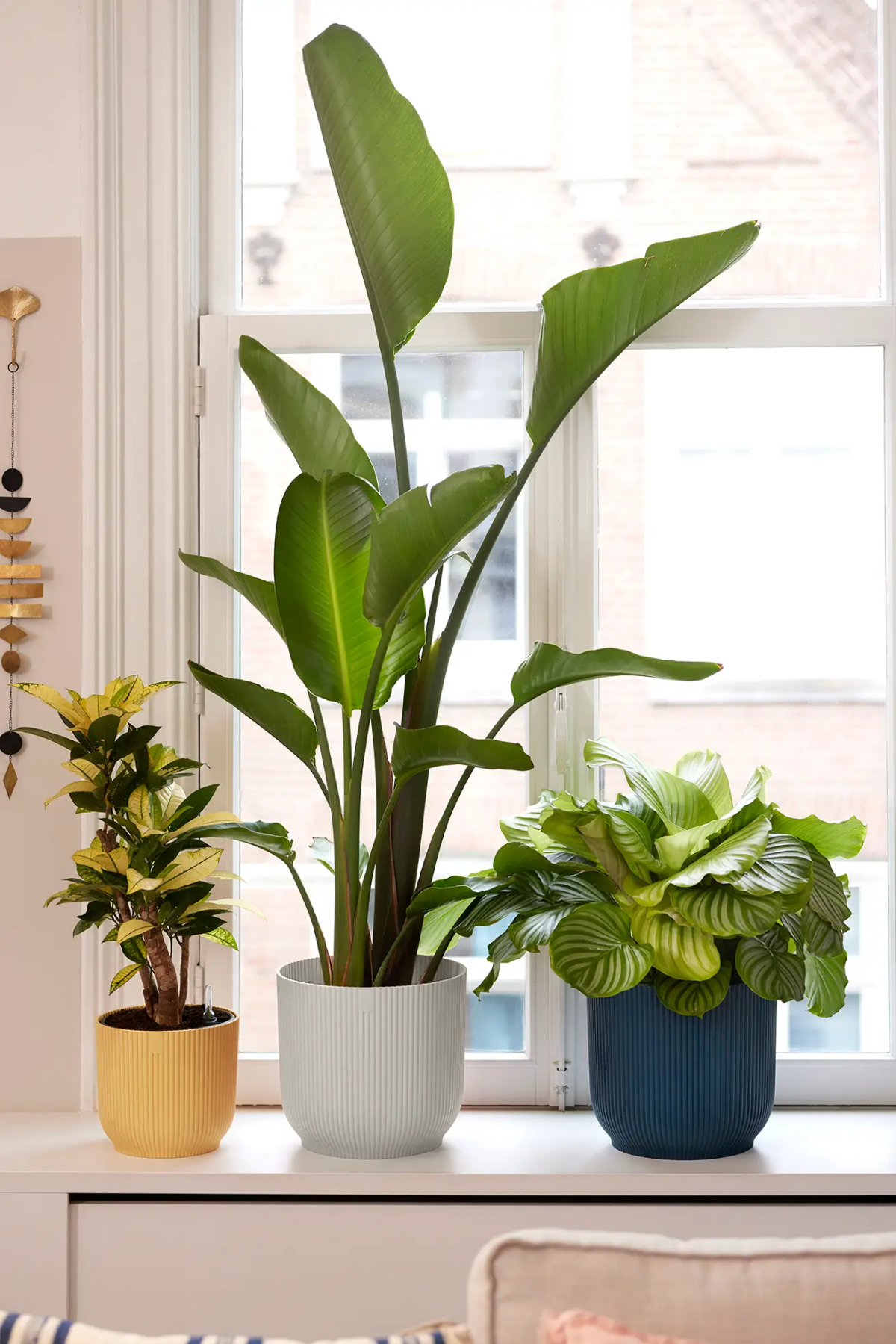
Your Startup Shopping List (And What It’ll Cost)
Before you get started, it helps to know what you’re in for financially. This isn’t the cheapest plant project, but you can be smart about it. Here’s a realistic breakdown:
- The Plant Itself: A small Dwarf Cavendish or similar variety will likely run you between $25 and $60 at a nursery or online, depending on its size and maturity.
- A Good Pot: Don’t skimp here. A decent 10-inch plastic or terracotta pot with a saucer will be about $10 to $20.
- Soil Ingredients: Instead of one bag of soil, you’ll be mixing a custom blend. All in, expect to spend about $25 to $35 for bags of high-quality potting mix, coco coir, and perlite. The good news is, you’ll have plenty left over for other plants.
- Humidifier (Optional but Recommended): A small, decent-quality humidifier costs around $30 to $40 and is a total game-changer for these plants.
- Grow Light (For Darker Homes): If you don’t have a super sunny window, a simple full-spectrum LED grow light bulb with a clamp lamp will set you back about $30 to $50.
Total initial investment: Around $90 to $205, depending on whether you need the extra gear. It’s an investment, but it’s for a living sculpture!
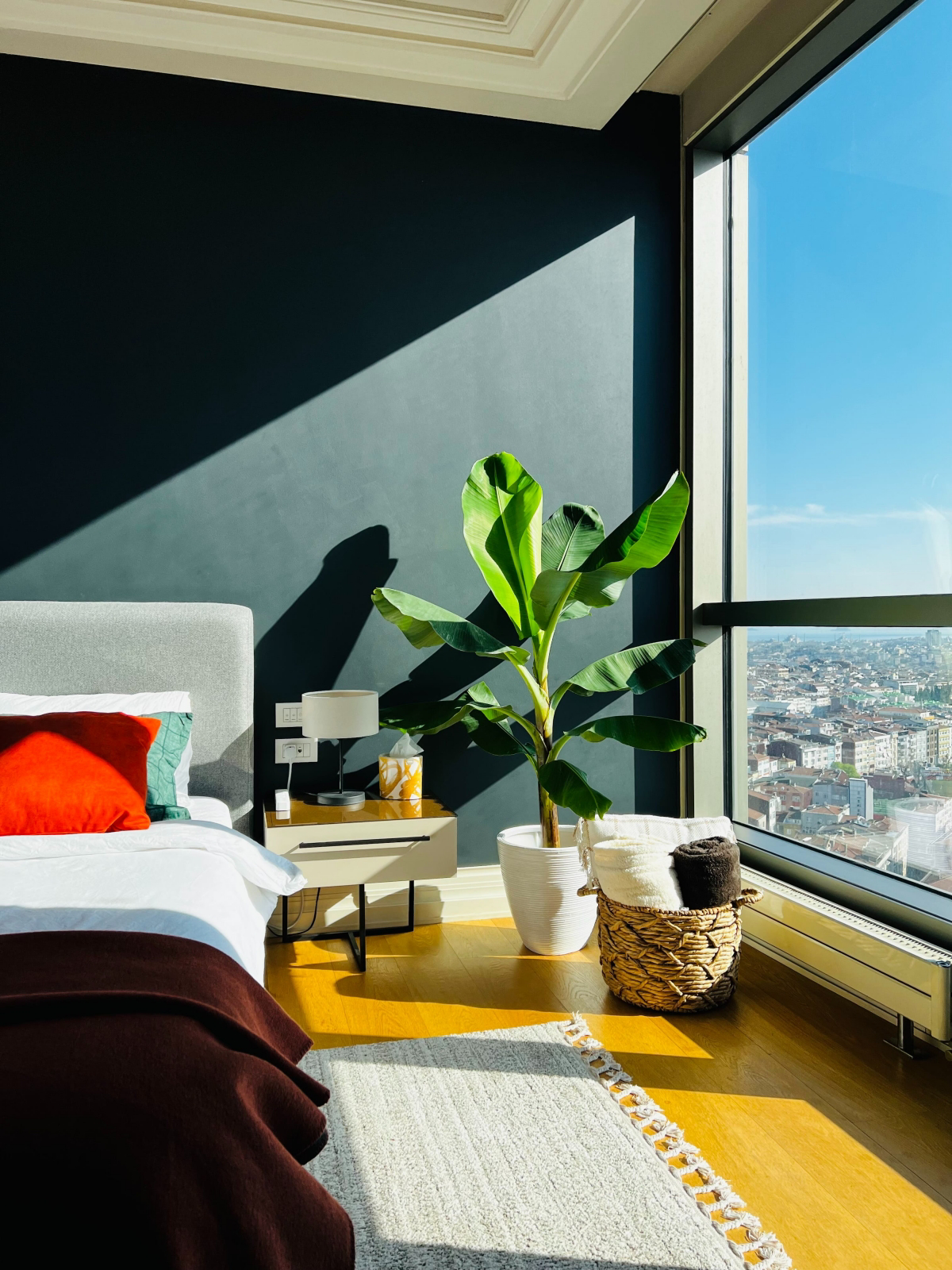
The Foundation: The Right Pot and Soil
Your banana plant’s entire future depends on what you put it in. They grow incredibly fast and are super sensitive to soil conditions. If you mess this part up, you’ll be fighting an uphill battle from the start.
My Foolproof Potting Mix
Banana plants need soil that can hold moisture without becoming a swamp. They absolutely hate sitting in stagnant water, which is the fast track to root rot—the #1 killer of these guys indoors. I never use potting mix straight from the bag for them. Here’s the simple recipe I swear by:
- 2 parts high-quality potting mix: This is your base. I recommend something like FoxFarm Ocean Forest or Pro-Mix. Try to get one without those built-in slow-release fertilizer crystals, so you can control the feeding schedule yourself.
- 1 part coco coir: This stuff, made from coconut husks, is fantastic. You can find it online or at most garden centers. It holds water like a sponge but keeps things airy, preventing the soil from turning into a hard brick.
- 1 part perlite or pumice: This is for drainage. It creates little air pockets that roots need to breathe. Perlite is cheap and light; pumice is a bit heavier and tends to stay mixed in better. Either works great. You can find them at Home Depot, Lowe’s, or any nursery.
- A handful of compost or worm castings: This adds a little organic nutrition to get things started on the right foot.
Mix it all up in a bucket or on a tarp. The final result should feel light and fluffy. Oh, and whatever you do, DO NOT use soil from your garden. It’s too dense, compacts in a pot, and is a great way to bring pests like fungus gnats into your house. Trust me, I learned that the hard way and spent weeks dealing with the consequences.
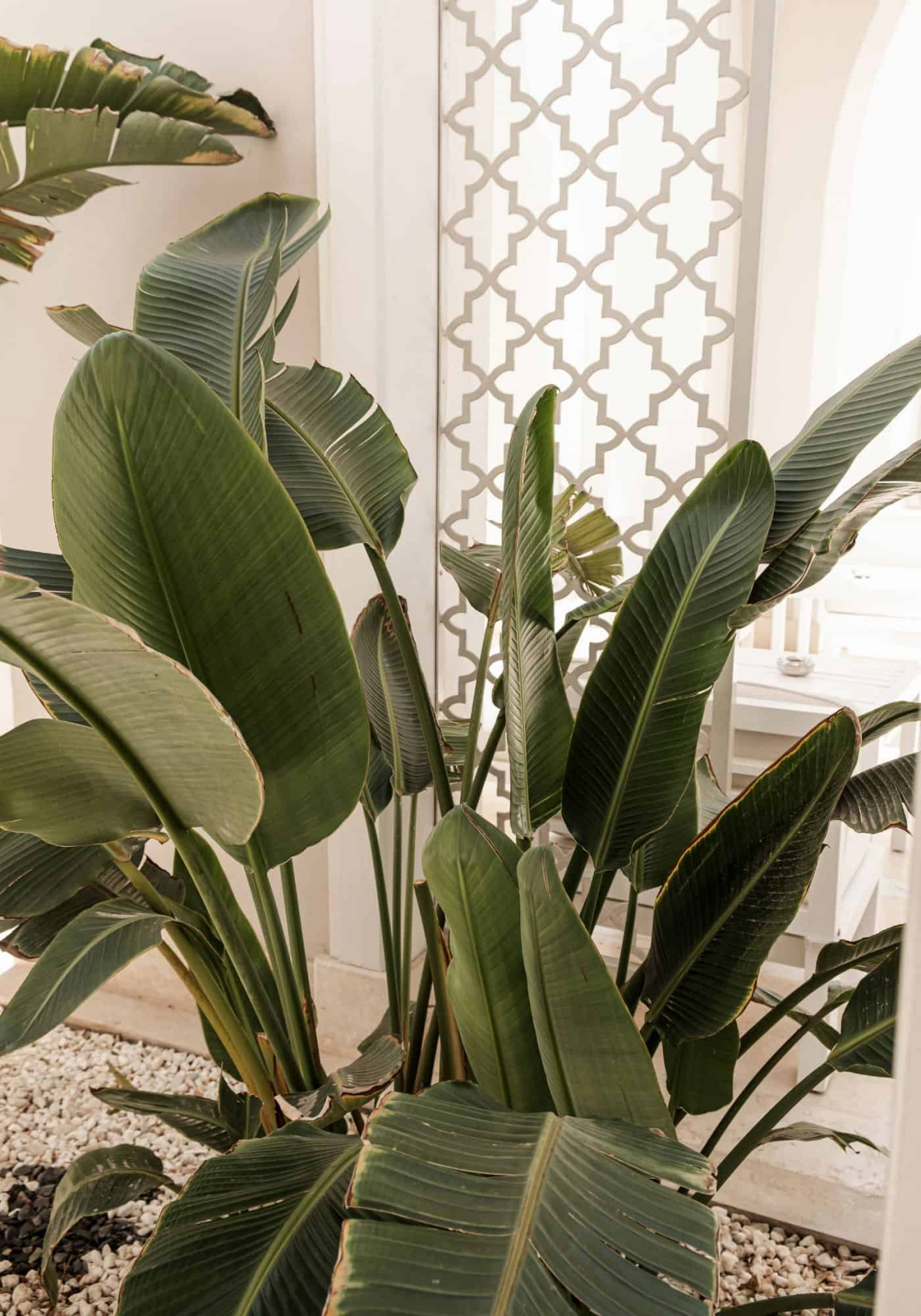
Choosing a Pot
The pot is just as important as the soil. First rule: it MUST have drainage holes. No exceptions. If you find a beautiful decorative pot without holes, use it as a cover pot (a cachepot). Just stick a plain nursery pot with holes inside it, and pull it out to water.
As for material, terracotta is great because it’s porous and helps the soil dry out, which is a good defense against overwatering. The downside? You’ll have to water more often. I usually end up using plastic or glazed ceramic pots for my bananas just to cut down on my watering chores. And when you’re potting up, only go 1-2 inches larger in diameter than the current pot. A small plant in a giant pot is a classic rookie mistake that leads to root rot because all that extra soil stays wet for way too long.
Your First 24 Hours: A Quick Guide
You just got your new plant home. You’re excited. You want to give it a new pot and a fresh start. What should you do?
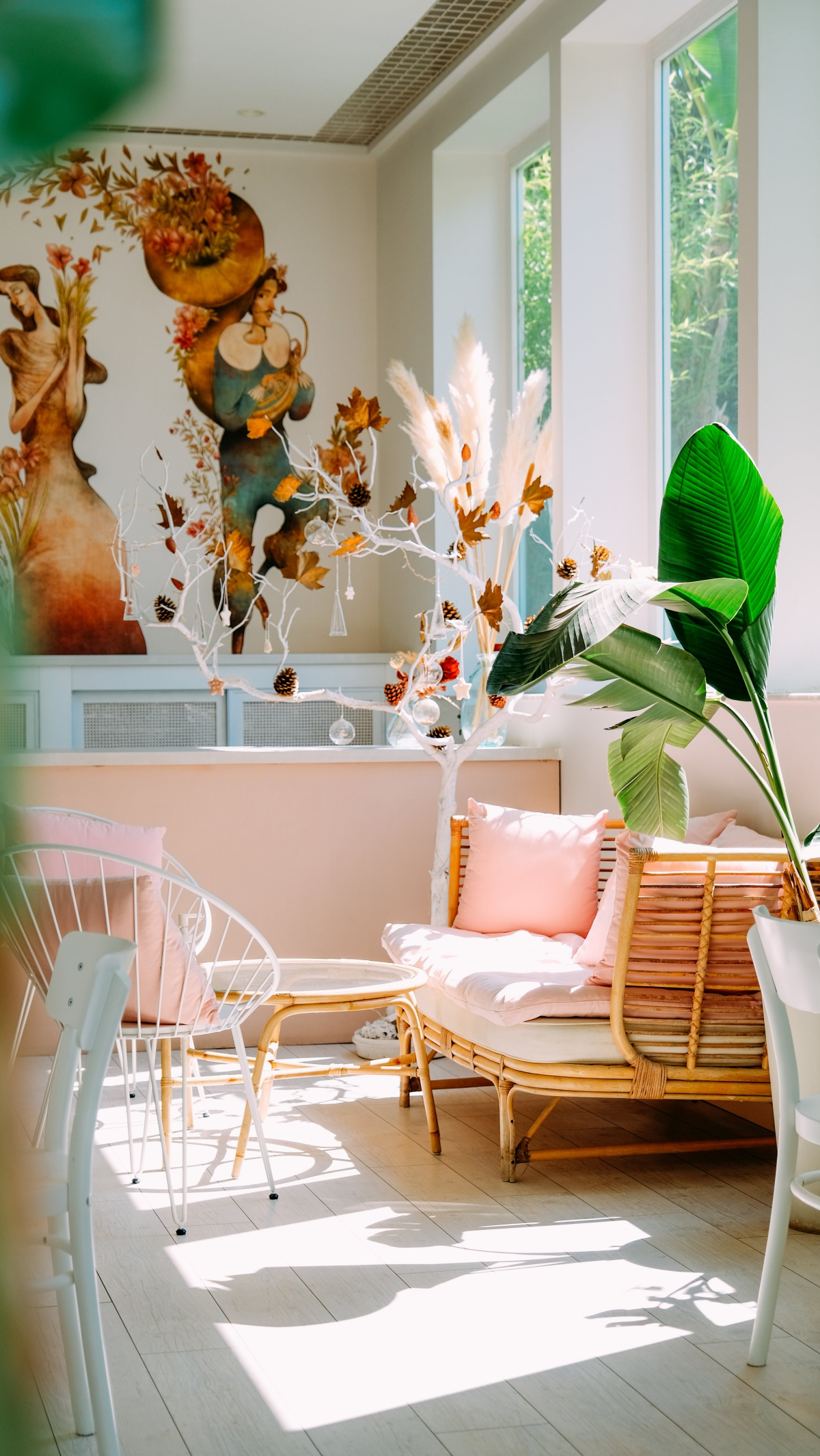
Absolutely nothing. Don’t repot it immediately! Your plant just went through the stress of being moved from a greenhouse to a store to your car to your house. It needs a minute to chill and acclimate to its new environment. Find a good spot for it and leave it in its nursery pot for at least a week or two before you even think about repotting.
Core Care: Light, Water, and Humidity
These three things are your daily job. They’re all connected, too. More light means the plant gets thirstier. Dry air can make the leaves look crispy, which you might mistake for a watering problem.
Light: Give It All You’ve Got
Banana plants are sun worshippers. Indoors, your goal is to mimic the bright, tropical sun they evolved in. This means giving them the absolute brightest spot you have. For these plants, “bright, indirect light” means right next to a south-facing window, maybe with a sheer curtain to block the most intense midday rays that can scorch the leaves. An east or west-facing window is a solid second choice.

If your plant isn’t getting enough light, it’ll tell you by getting “leggy”—the stems will get long and stretched out, and the leaves will be smaller. If you see this happening, you either need to move it or get a grow light. I use full-spectrum LED lights for mine in the winter for about 12-14 hours a day. It keeps the growth strong and prevents that sad, stretched-out look.
Watering: Consistently Moist, Never Soggy
This is where most people trip up. “Consistently moist” is a confusing phrase. Here’s what it really means: stick your finger about two inches into the soil. If it feels dry, it’s time to water. If it’s still damp, check again tomorrow. It’s that simple.
When you do water, do it thoroughly. Pour water over the top of the soil until it flows freely out the bottom drainage holes. This soaks the entire root ball and helps flush out any mineral buildup. After a few minutes, make sure you dump out any water that’s collected in the saucer. Letting a plant sit in a puddle is the fastest way to invite root rot.
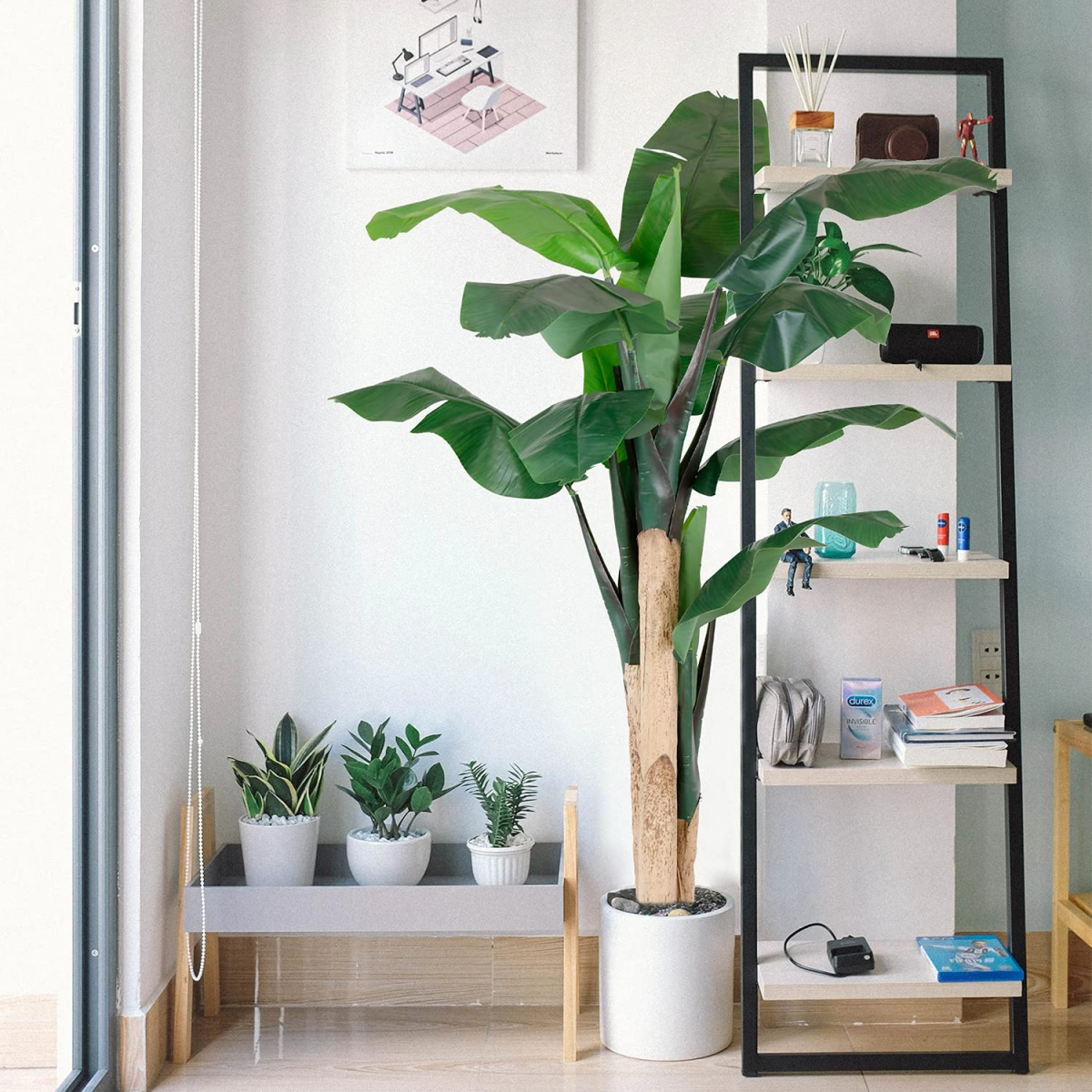
Humidity: Fake a Tropical Climate
Most of our homes are way too dry for a banana plant, especially if you run the heat or AC. The first sign of low humidity is usually brown, crispy edges on the leaves. Misting is a popular suggestion, but to be frank, it’s mostly a waste of time. The effect is gone in minutes. A much better strategy is to use a small humidifier near the plant to keep the air at 50% humidity or higher. Grouping your plants together also helps, as they create a little humid microclimate for each other.
Feeding: The Diet of a Rapid Grower
Banana plants are hungry. All that fast growth requires a ton of fuel. During the growing season (spring through summer), you need to fertilize regularly. I use a balanced, water-soluble fertilizer like a 10-10-10 or 20-20-20, feeding every 2-3 weeks.
Heads up! Always follow the dilution instructions, or even mix it at half-strength to be safe. Giving it too strong of a dose will cause “fertilizer burn,” which looks like crispy brown tips and damaged roots. And always fertilize after you water, when the soil is already moist. In the fall and winter, cut back to once a month or stop completely as growth slows down.
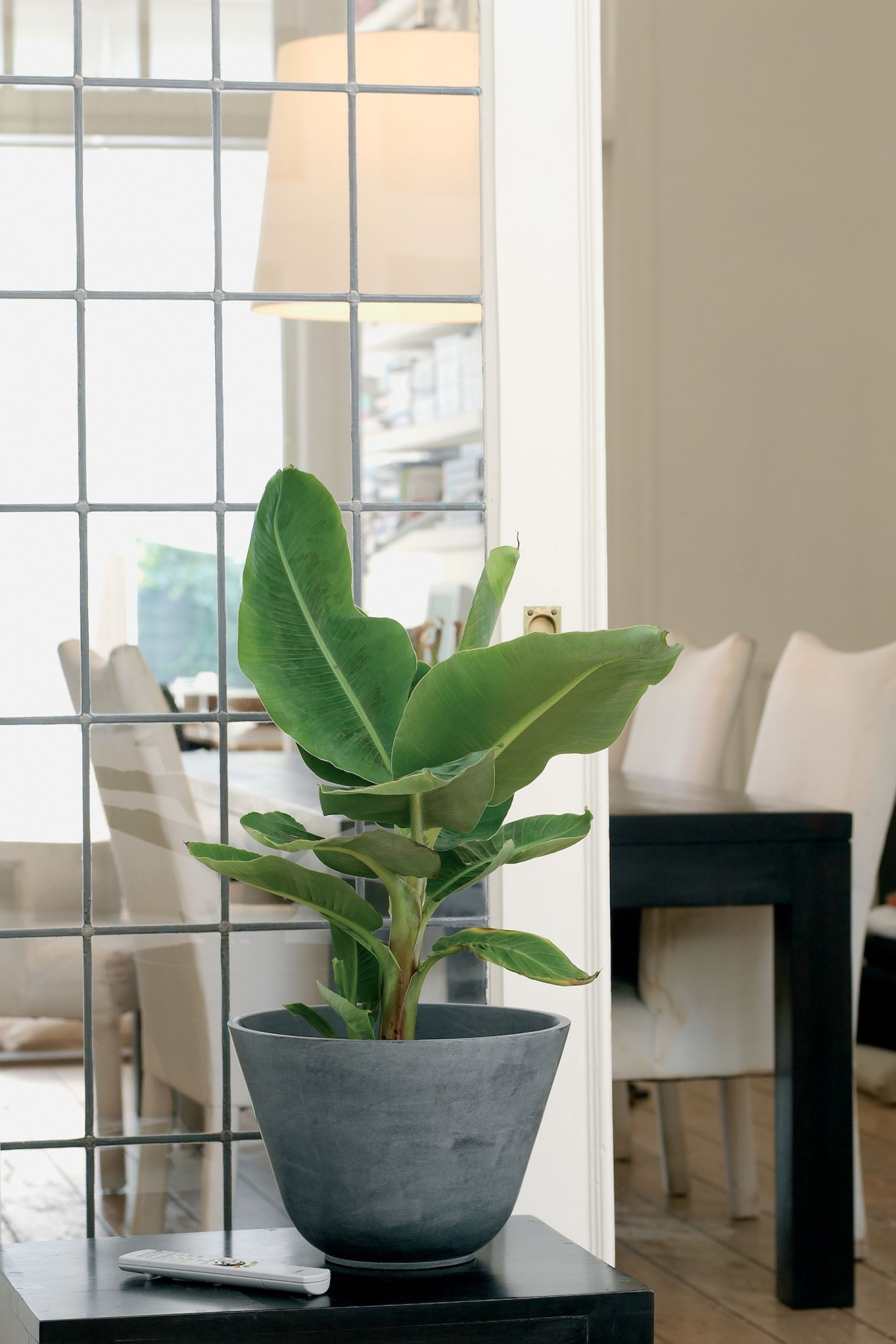
Maintenance and Making More Plants
A happy banana plant is a busy plant. It will be pushing out new leaves and even new baby plants from its base.
Pruning and Cleaning
It’s totally normal for the oldest, lowest leaves to turn yellow and die off. Once a leaf is mostly yellow or brown, just snip it off close to the pseudostem with clean shears. This keeps the plant looking good and directs energy to new growth. By the way, a great quick win is to wipe the leaves down with a damp cloth every few weeks. It removes dust, helps the plant absorb more light, and is your first line of defense against pests.
Making Babies: Separating the Pups
One of the coolest parts of this journey is when your plant starts making “pups” or “suckers”—new shoots from the base. This is how it reproduces. You can separate these to create brand new plants for free!
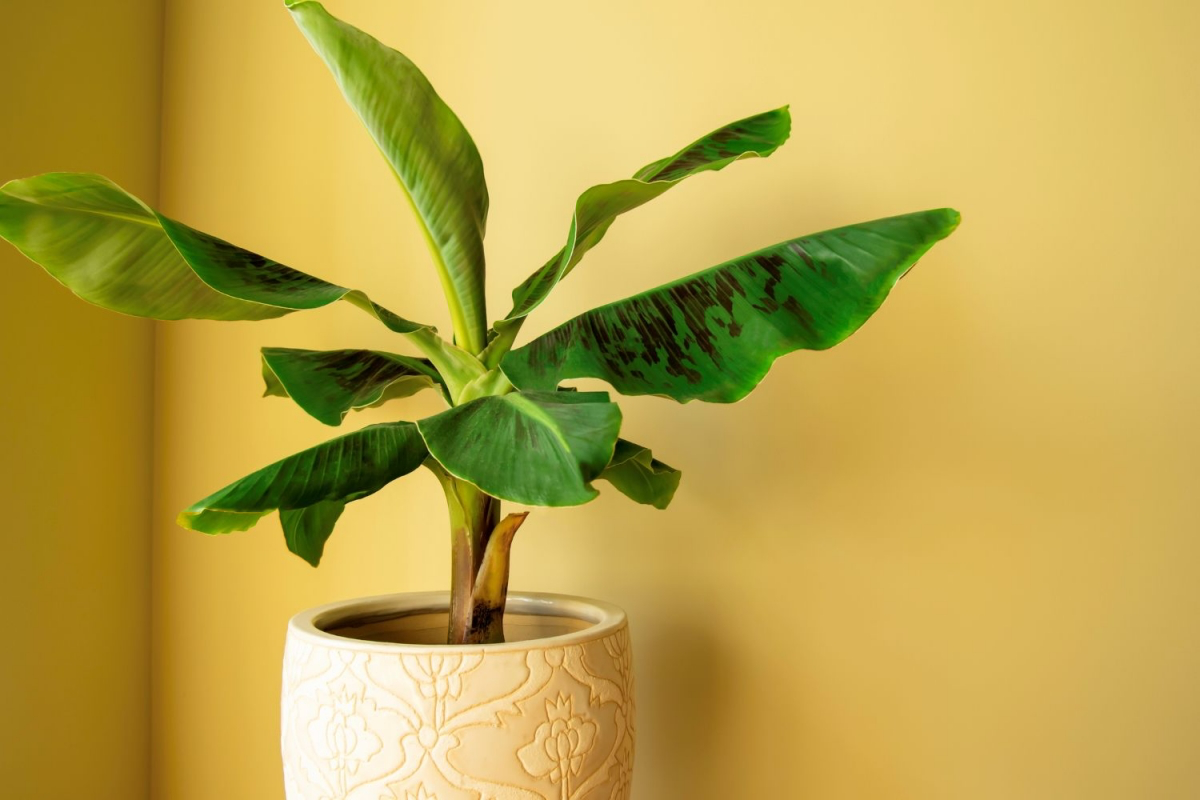
Wait until a pup is at least 6-12 inches tall and has a few of its own leaves. Carefully take the whole plant out of the pot and gently clear away the soil to find where the pup connects to the mother corm. Using a very sharp, clean knife, make one firm cut to separate them, trying to get some roots with the pup. You can pot the mother plant back up and put the new pup in its own small pot.
Important: Your new pup is going to look miserable for a few days, maybe even a week. It will wilt and look like it’s dying. This is normal transplant shock! Don’t panic and drown it with water. Keep the soil lightly moist, and it will perk up once its roots get established.
Troubleshooting the Inevitable
Even if you do everything right, you might hit a snag. Here’s how to handle the most common issues.
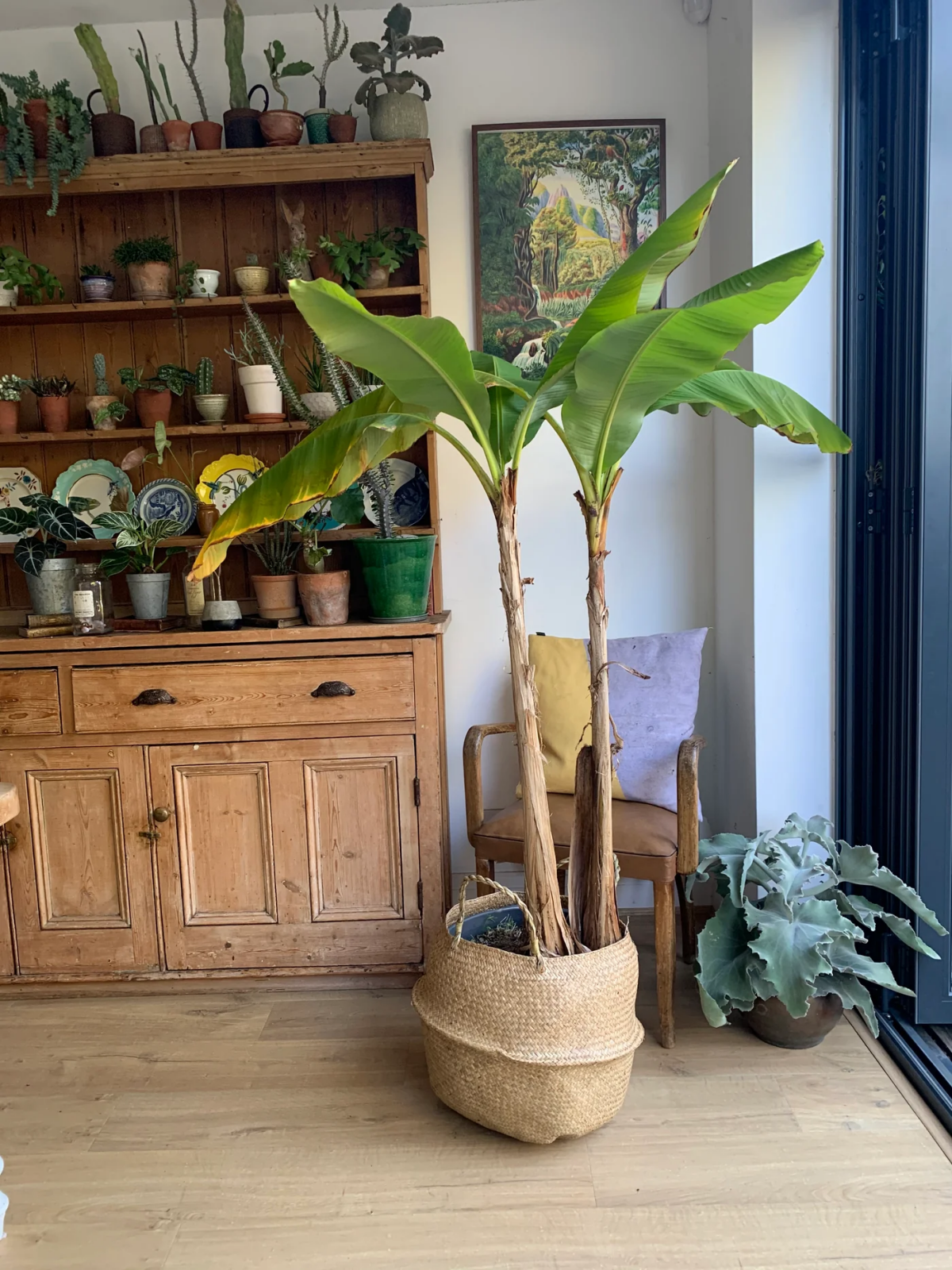
- Problem: Yellowing Lower Leaves.
Likely Cause: Nine times out of ten, this is overwatering. Check the soil moisture. If it’s soggy, let it dry out more between waterings. - Problem: Brown, Crispy Leaf Edges.
Likely Cause: Low humidity. Get that humidifier going or try a pebble tray. It can also be a sign of salt buildup from tap water, so flushing the soil with distilled water once a month can help. - Problem: Spider Mites.
Signs: Fine, silky webs on the undersides of leaves and tiny yellow dots on the leaf surface. They love dry conditions.
Solution: Isolate the plant immediately! Give it a good shower, spraying down the leaves. Then treat it with insecticidal soap, repeating every 5-7 days for a few weeks to catch their whole life cycle. - Problem: My Plant Has Root Rot!
Solution: Okay, time for emergency surgery. I’ve saved a plant this way. You have to be ruthless. Pull the plant out of the pot, wash the roots, and get a clean pair of scissors. Cut off EVERY root that is black, brown, soft, or mushy. Healthy roots are white and firm. Repot what’s left into a clean pot with fresh, barely-damp soil. It’s a long shot, but it’s its only chance. - Problem: Why Isn’t It Making Bananas?
Solution: Adjust your expectations. Fruiting indoors is incredibly rare. It requires a perfect storm of intense light, heat, and humidity that’s nearly impossible to create in a home. Grow the plant for its stunning foliage. Think of any fruit as a once-in-a-lifetime bonus, not the goal.
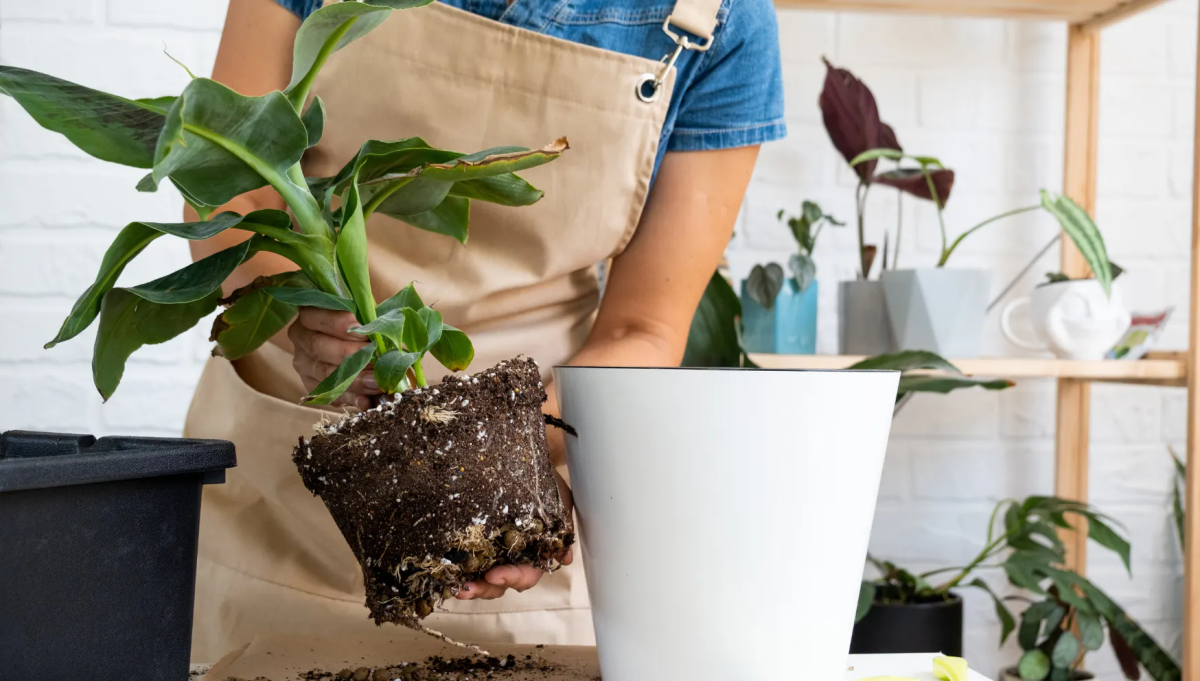
A Final Thought
Let’s be clear: this is not a low-maintenance plant. It requires a commitment. But if you’re willing to give it what it needs, you’ll be rewarded with a spectacular living sculpture that truly brings a space to life. Every new leaf that unrolls feels like a personal achievement.
Galerie d’inspiration
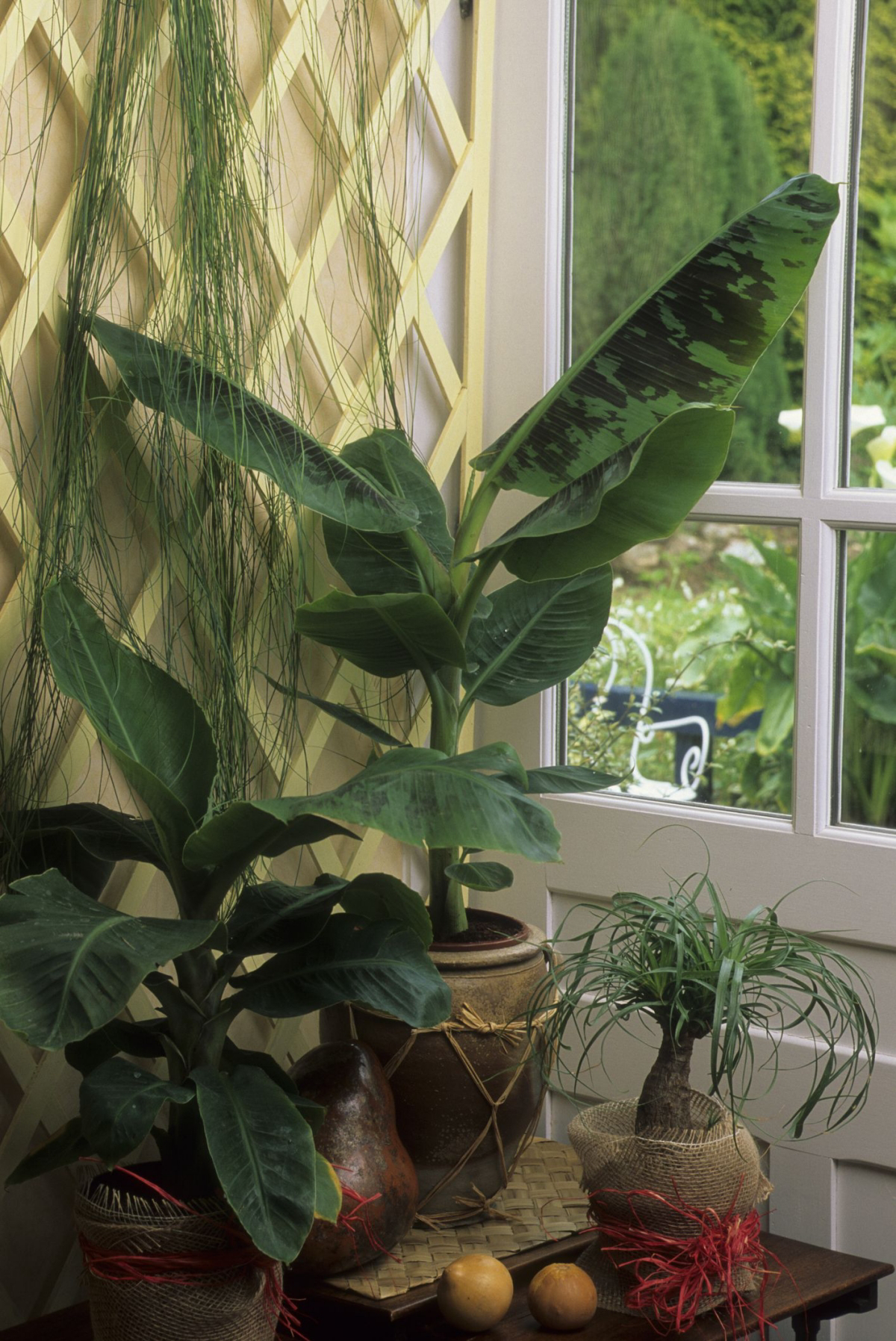
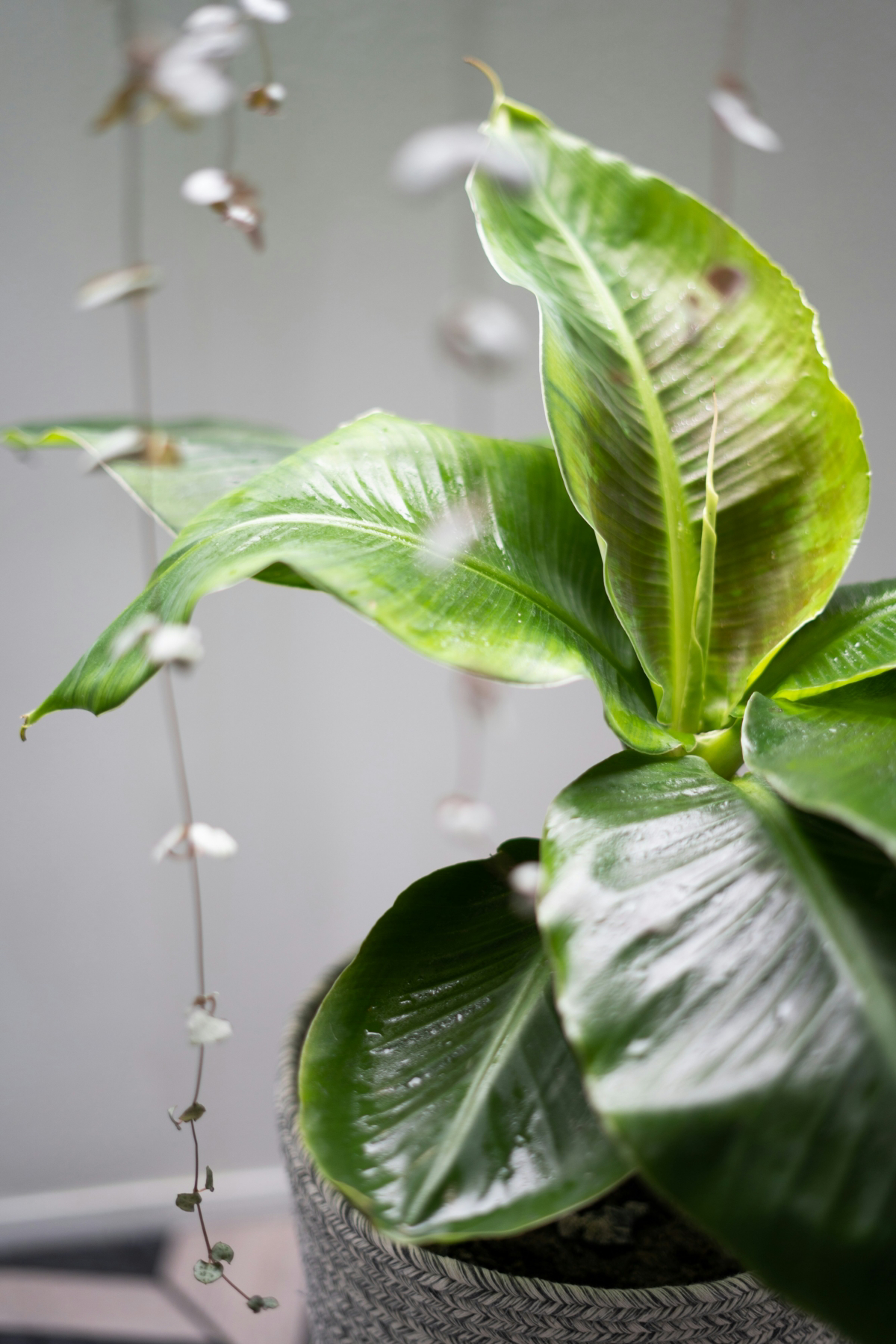
Are the edges of those beautiful leaves turning brown and crispy?
Don’t just blame your watering schedule. The likely culprit is low humidity, the arch-nemesis of these jungle natives. While misting provides a fleeting moment of relief, a more permanent solution is a pebble tray. Simply place the pot on a saucer filled with pebbles and water, ensuring the pot itself isn’t submerged. As the water evaporates, it creates a humid microclimate right where it’s needed. For a real upgrade, a small humidifier, like a Levoit Core 300S, can transform your space into a tropical haven.
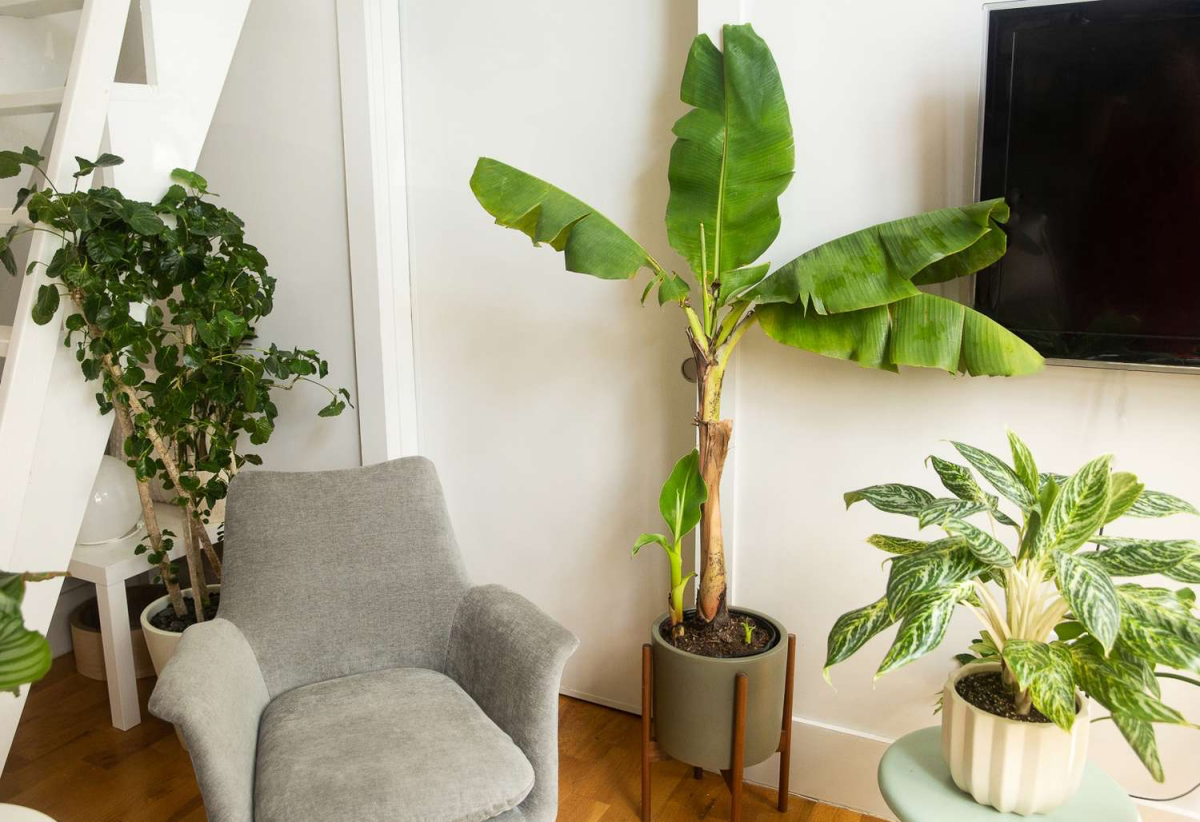
A single banana leaf can grow up to 9 feet long in the wild, but even on a dwarf variety, they are huge water-transferring systems.
This is why their thirst seems unquenchable. During the growing season (spring and summer), you’ll need to water thoroughly as soon as the top inch or two of soil feels dry. Don’t let the pot sit in a saucer of water, as this can lead to root rot. A good rule of thumb: it’s better to give it a deep, thorough soak less often than little sips every day.
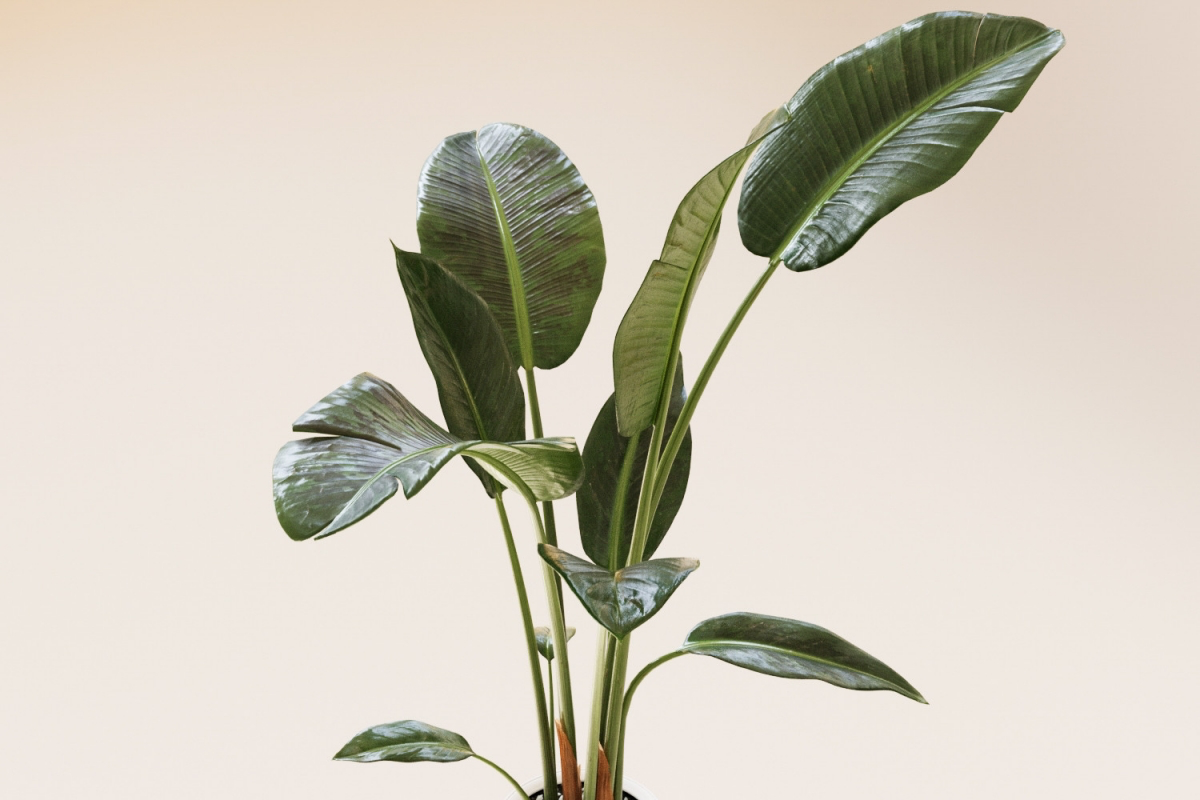
Direct Afternoon Sun: A common mistake. While they are sun-lovers, the intense heat from a west-facing window can scorch their tender leaves, leaving brown, burnt patches.
Bright, Filtered Light: The gold standard. An east-facing window with gentle morning sun is perfect. Alternatively, place it a few feet back from a bright south-facing window, where the light is strong but not direct.
Think dappled jungle canopy, not a harsh open field.
- You get a lush, tropical focal point.
- You witness the thrill of a new leaf unfurling.
- You can literally grow the family.
The secret? Your plant will do the work for you. Healthy banana plants produce “pups” or “suckers” at their base. Once a pup is several inches tall and has its own leaves, you can carefully separate it from the mother plant to start a brand new plant—the perfect living gift.










